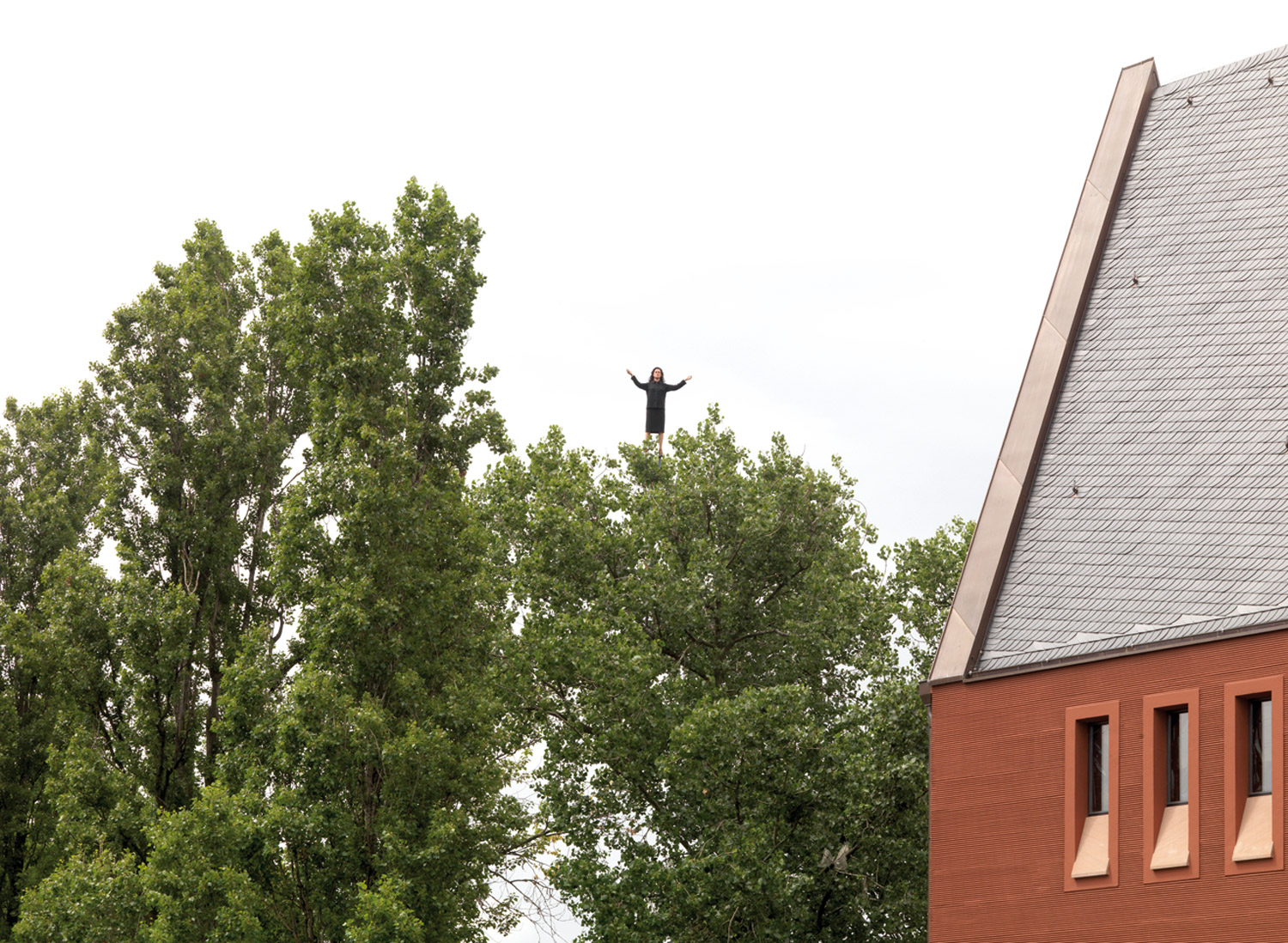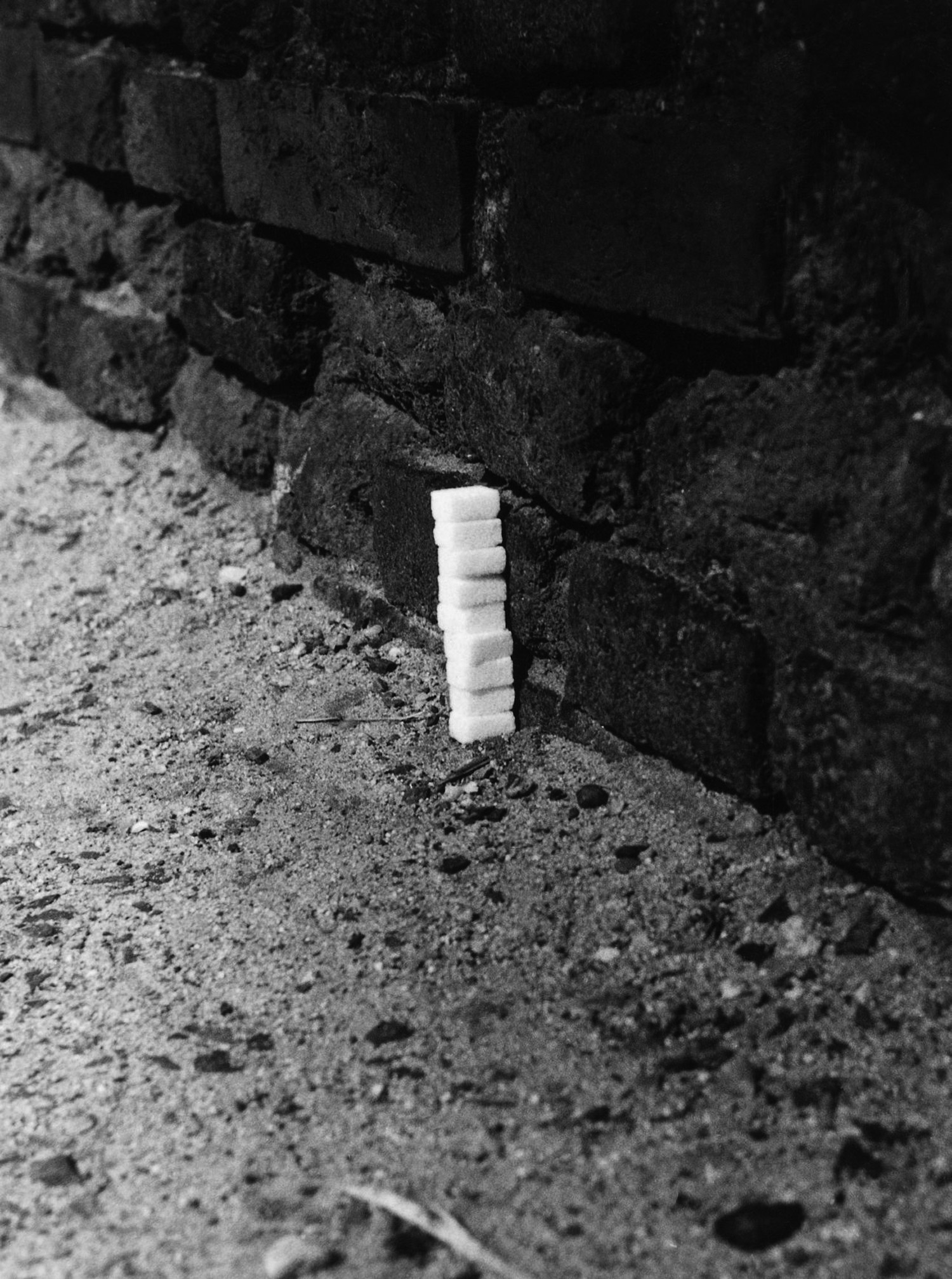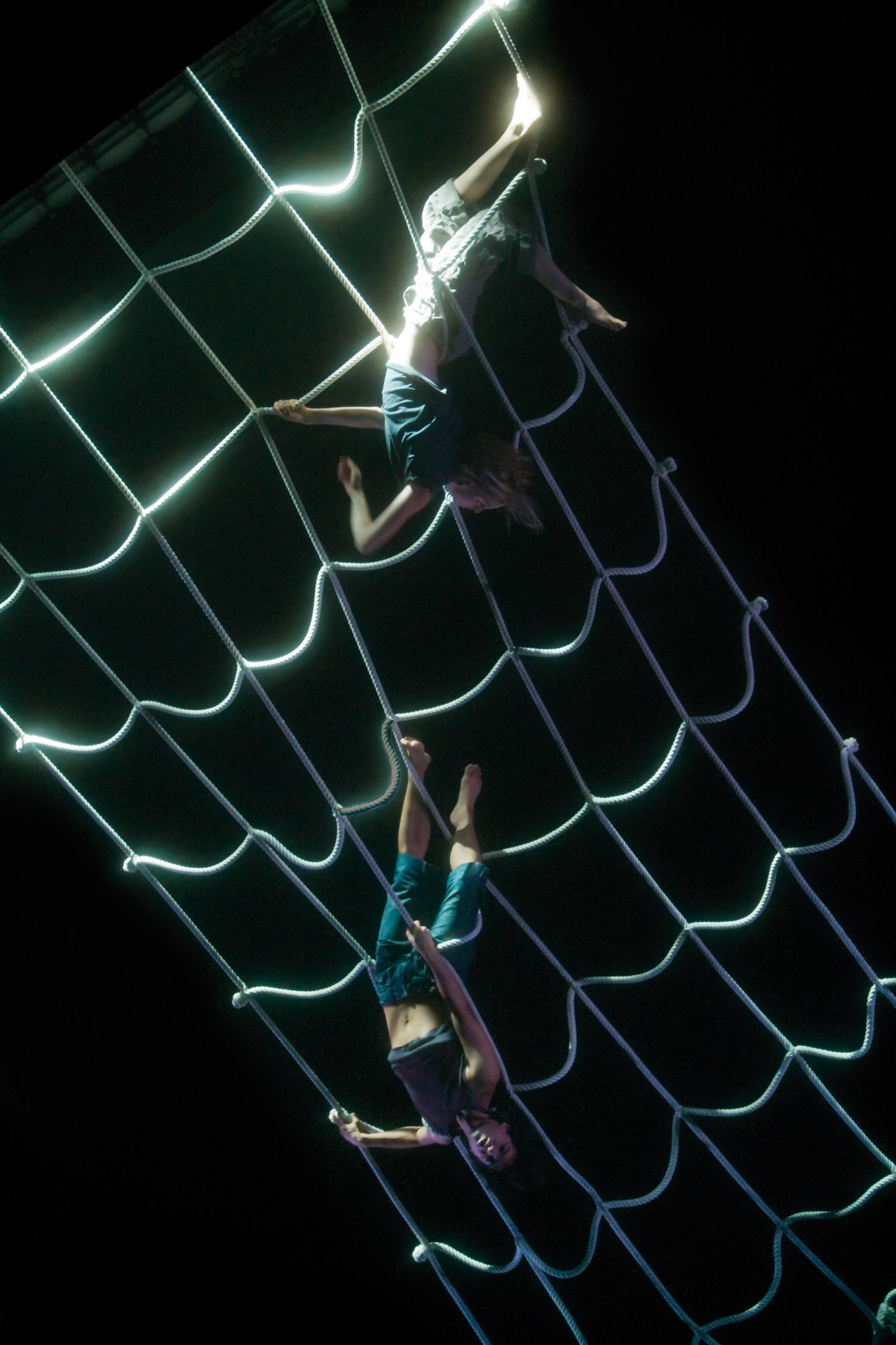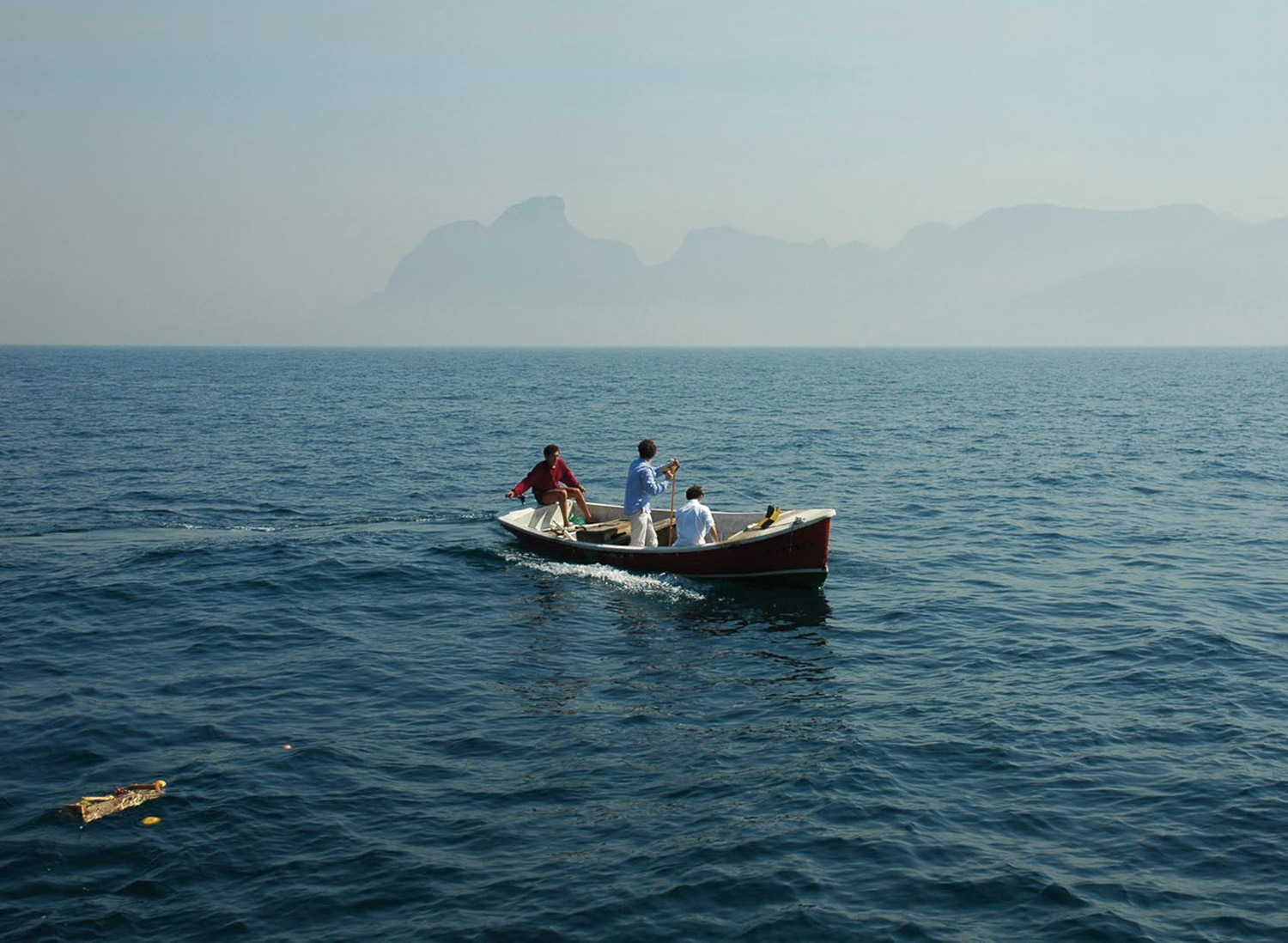
It seems to be the case today that conceptual programs for institutional exhibitions are increasingly driven by the dictates of financial gain. In many places, the major exhibition venues no longer present themselves as centers of intellectual inspiration and excitement. Gone are the days when Alfred H. Barr Jr., the director of MOMA, made it the most creative and at the same time most successful museum in the world, quoting his credo: “The artists lead: the museum follows…” But perhaps it is also the case that in earlier decades there really were more artists whose direction people were all too glad to follow without any ifs or buts. But either way, there is no need to be exclusively pessimistic as a museum director today so long as artists like Maurizio Cattelan turn up at the right moment.
What happened was this: it was a rainy afternoon sometime in autumn last year when Maurizio Cattelan rang me up in my Frankfurt office to propose an exhibition project. Nothing was said at that point about what might be shown, just an amicably formulated, lucid statement about the essential conditions for realizing such a project. The idea was to keep installing a series of new works in the context of the MMK museum collection successively over a period of several months, without saying a word about it, simply going ahead, allowing things to happen, without explicitly approaching the public to explain anything to them. Cattelan’s Frankfurt Project was intended to make its impact on the world without rushing to formulate the artistic ideas behind it.
So first of all, last March, a horizontal incision was made in the outside wall of the museum and an office table pushed through it. This meant an irreconcilable loss of control over the concrete line of demarcation between the museum interior and its urban surroundings. There has been a powerful draught from outside to inside and vice versa ever since. If the weather is stormy outside, the museum has a spell of bad weather as well. If the weather is nice outside, warm air flows into the interior. And wouldn’t a museum with no walls actually be the best of all? Even without glass walls? Though whose birthday the creamy-chocolate birthday cake on the table in the open air is celebrating remains a mystery. But there is no mystery about the fact that the table that has been pushed through the wall owes its presence to an administrative dodge: permission to open up the façade could not be acquired for art-work status; the piece had to be installed in the guise of a “temporary building site.” But these conditions will have to be reversed some time in the future — art must remain art!
Actually the table is very striking from both the inside and the outside, though it would have attracted more attention if it had been stated from the outset that it was a work by Maurizio Cattelan. No one suspected it might be a Cattelan work at first. People just talked about that table at the MMK. But isn’t that exactly what was intended? The work was being discussed, not its author.
Later visitors were faced not just with a table, trying to look at the cake from the inside to the outside, while getting a breath of fresh air at the same time, they also found themselves standing near another work in the form of three arms sticking out of the wall, looking very much as though they are giving a Nazi salute. Anything like this still carries a whiff of scandal in Germany, and provokes protest, especially as Cattelan christened the work Ave Maria. It has now been hanging in a room of its own since April, strong enough in itself to imbue it with a painful aura. And since then, no one has got worked up or angry, or written and fired off protest notes. And this should not be ascribed to a greater degree of tolerance entering the German soul, but to the work itself. It is not a shallow joke that has mutated into a sculpture. On the contrary, here we can marvel at the threefold gesture that also radiates a sense of protection, indeed contains profoundly Christian features and references. An almost spiritual calm pervades this space. When asked about this, Cattelan said recently: “Anyone who didn’t like Roberto Benigni’s film La vita è bella (Life is Beautiful) will not have laughed when seeing it. In other words, the fact that people suddenly fall silent does not mean that they are responding positively. As soon as you enter the space with Ave Maria in it you are getting into a complicated situation, because unexpectedly, the work offers consolation. And think of the prayer called Ave Maria. Are we not frequently faced with moments in life where only prayer can help?” — and in hindsight, has Cattelan’s little Hitler ever exuded provocation? Both these points are perfect examples of the breathtaking quality of Cattelan’s work. And anyone who is constantly looking for the jester’s cap behind his work would do better to take a swift look at his own attitude.

Imagine: thousands of visitors had already seen and discussed Cattelan’s tvo works up to this point, but the sensation was still below the critics’ radar. Was this because no press packs had been sent out, no invitations issued and no ads appeared? Are the only newsworthy artists or works of art those that use the tried and true paths of communication?
Cattelan’s next intervention was targeted at public space. Exactly a year after the football World Cup in Germany, countless advertising pillars in Frankfurt were decked out in the German national colors, black, red and gold. And above the German federal eagle, which has decorated the German coat of arms triumphantly from time immemorial, the poster carried the word “Cattelan” and the letters “MMK” could be seen in the eagle’s talons. Now it really was impossible to overlook who had a finger in this pie.
Further interventions then followed in quick succession. A letter was posted all over the world, exactly during the openings in Venice, Basel and Kassel. It carried the Monte Carlo Casino (6 Rue Vladimir, 16486 Fialta, Redonda Island) as a return address, and issued an invitation to Frankfurt — in the name of Daniel Birnbaum, Maurizio Cattelan and Udo Kittelmann — on the day before the opening of Documenta 12. This letter also contained a playing card with the joker’s image on it, the face reminding many viewers of Cattelan’s own features. And the timing of this letter was precisely calculated to be so late that in most cases it could not possibly reach its addressees in time. And yet the invitation did its rounds and the art caravan detoured via Frankfurt on the way from Basel to Kassel. Cattelan once said about the impact his work makes: “Is not the best piece of news the one conveyed by word of mouth? If a work is unannounced and unexpected, it takes you by surprise, and that attracts much more attention. I am not sure… My approach is less explicit in a sense, but it is definitely in your face.” It must be conceded that Cattelan is right, especially with regard to his Frankfurt project.
And then came the day when the new horse torso was positioned high above the central hall in the MMK; its head had pushed its way into the wall. So far this work doesn’t even have a title. I was immediately reminded at the time of Kafka’s short story Der neue Advokat (The New Advocate). The protagonist of this story was called Dr. Bucephalus, a name shared with Alexander the Great’s war horse. The idea, disturbing at first, of a war horse that turns into an advocate develops into a plausible hypothesis in the course of Kafka’s short story, from which Kafka’s motif of an animal changing into a man emerges. The noble creature, traditionally afraid of its own shadow, also invokes the idea of masculinity; it changes into a bureaucrat and does not seem to be acting against its nature in doing so, perhaps also because of its initial timidity. But probably there is a quite different story behind this horse, and I am not the only person to have sniffed it out. Not knowing exactly does not have to indicate an intellectual void. As frequently happens, Cattelan’s work, whose symbolism suggests inaccessibility at first, simply requires to be addressed in more detail. This is also true of his work Frau C., which floats high above the trees of the Portikus, the Frankfurter Kunstakademie’s exhibition hall. She is dressed in black and stands upright. She is looking far above herself, and has extended her arms in a gesture of blessing. One thing seems certain here in any case: this is an event outside the normal run of things. And when viewed from a certain angle, the tip of the Frankfurt cathedral spire can be seen as a background to Frau C. and Dr. Stefan Scholz is a priest in the cathedral there. He has written a piece called “Verbergende Wände” (Concealing Walls) on Cattelan’s work. I won’t keep it from you, and quote it in full below:
“Mass demonstrations and parades in the National Socialist period, filmed from above. Individuals disappear among the masses, and the masses disappear under the arms raised in a Nazi salute. What remains is a bulwark of lances made up of bones, flesh, hair and fabric, a collective gesture of clenched aggression and determination. Each arm covers the head of the man in front, and what remains is pure will for power. A creature with a thousand arms is shouting its spirit of conflict at the Führer. Cattelan dissects three limbs from this beast and fastens them to the wall. Three hands protect visitors, form a roof over their heads, like an old gesture of blessing still used in Christian liturgy. But three arms also stretch out above the visitors, taking their eyes far beyond themselves into an imaginary East, an even greater height. One single extended arm would seem ridiculous, two would still be tolerable, a third already suggests a crowd and gives the installation a threatening aspect. It is the fine, cleanly placed male hairs on the back of the hand that symbolize the joys of fighting. Our imaginations have to shape the other parts of the body from the wall, the faces in particular. Wiry, ascetic types with short haircuts and strikingly masculine features; bullnecked heavyweights with chubby, pendulous jowls, red faces and flesh bulging out over their excessively tight collars; sickly middle-of-the-road pen-pushers typical of the upper National Socialist echelons. The serious suit fabrics suggest contemporary faces and features. The cramped space increases the potential for danger by one more factor. Cattelan is not alluding to any figures from the past. The bogeymen the arms belong to remain anonymous. People you might least expect to do so will, even today, confidently raise their arms and whet their knives behind alleged promises of prosperity and protection. A horse with its head going through a wall is amusing. Three separate arms would be just as amusing, if the National Socialist period were merely history now, and people did not need to be afraid that dubious characters from earlier days have spawned numerous intellectual and spiritual heirs. If it were possible to laugh out loud at Cattelan’s installation, it would be a good sign for our society.

Half a table disappears into a wall that has been torn open, holding two of its four legs in the air. The cake on the outside part can be seen only from the inside, and could only be eaten on the outside, sitting down. It is hidden from the outside. People standing inside wonder how they can get at the cake; people standing outside wonder why a table is hanging half in the air like that. Cattelan’s table is a problem whichever way you look at it. Seen from the inside, because the table is inseparably connected with eating, but the edible element refuses to be eaten. Seen from the outside, a table you can’t sit down at is robbed of its function. This installation is disturbing from every angle. It is amusing to look at, but also casts significant light on the way human perception and the insights reflecting upon it function. An everyday object is placed in an essentially absurd setting. It arouses curiosity, and makes something we scarcely notice — because it is so ordinary, just a table — into an object creating profound insights. The wit of this installation is not revealed by external scrutiny alone. Only those who take the trouble to look from the inside and the outside will see more, though without grasping its ultimate implications.
A museum arouses curiosity as a stimulus. People have become accustomed to the material to be seen inside it as well, and this needs to be seen in a fresh light. Cattelan’s work is also a great act of folly. Despite all the seriousness of academic research, it always needs a pinch of gallows humor, because what can be perceived is always exceeded by what could still be perceived: not always just what has yet to be discovered, but also the countless facets of cognitive possibilities within what has already been perceived. Cattelan makes the visitors run from the outside to the inside and the inside to the outside as if on a treadmill, without their ever being able to get a view of the object as a whole. Human beings are either driven mad by the urge to know, or learn to laugh at themselves, to stop being so grim and dogged about everything, to see life as a game and not take themselves too seriously, or if they want to be serious, they learn to become humble.”
(Dr. Stefan Scholz)
The project started unannounced, and perhaps it will come to an unannounced end some time as well. But at the time of writing this, a new Cattelan work has started doing the rounds of the MMK, and beyond it. He is a punk, short of stature, seriously down-at-heel and only one and a half meters high. He makes a few rude remarks, flirts at times and begs for money.




